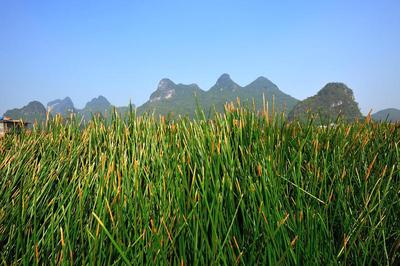🥜 Can Dogs Have Water Chestnuts? - Toxic!
Are Chestnuts safe for your dog to eat? What are the benefits, we discuss
 Example of cooked water chestnuts
Example of cooked water chestnuts
Dog Eat Guide Summary
Water Chestnuts Can Be Toxic To Dogs
Water chestnuts, those unusual looking red hairy fruits from Asia, have been popping up in the news lately as a result of a report from a poison control center. In the report, it was stated that a 10-lb. dog had ingested a large quantity of water chestnuts (several hundred grams) and “developed a severe abdominal pain and began vomiting, developed a fever, developed a strong acidic stool, developed a weak pulse, developed a weak respiratory effort and began having a seizure.”. As with anything moderation is key here, don’t give your dog an entire bag or multiple cans.
According to the National Institutes of Health, over 30000 cases of canine poisoning by water chestnut ingestion occur each year. This is a high statistic, considering that these plants are widely available for your dog to munch on. When ingested, the plants are toxic to dogs. There has been concern about the consumption of water chestnuts, particularly dogs. In fact, a lot of places have banned them from being fed to dogs. However, no institute has actually performed a scientific experiment to see if they are safe for consumption. An anecdotal study several years ago, concluded that they were perfectly safe for consumption by dogs, but only if they were dried or cooked prior.
Are they ok to eat raw, will they make my dog sick?
It’s recommended you wait until they are dried first, since drying removes the hypoglycin A which is a toxin that can cause liver damage, allowing you to safely feed dried water chestnuts to your dog. Since the canned variety contain sodium, dry is the best form to serve to your dog, plus they’ll probably enjoy crushing them 😀!
Safe for puppies?
It is safe to feed them these as a treat, but feed half of what you would to an adult dog. Puppies have a sensitive digestive system and their stools are usually very loose and watery. This is also a normal state for a puppy so it would be hard to tell if chestnuts caused any upset or issues, so keeping to a minimum is advised here.
Ingredients
The water chestnut is a very strange looking fruit that grows underwater, it looks like a nut but it’s a floating spiky fruit! Their also known as oriental chestnut, chufa nuts, and water nuts, they’re classes as tuber which is native to China, Japan, Korea, and other parts of Asia. They’re shaped like potatoes and have a crunchy texture and nutty flavor.
The water chestnut’s edible, tender stalk is yellowish in color, and several different varieties of water chestnuts are grown in the U.S. They are often mistaken for the tuberous roots of the alligator plant (the scientific name for this plant is rhizome, not tuber). The two will look similar when seen in the soil.
Their sap is highly toxic, and can cause severe irritation, burns, and potentially blindness worst case. However, despite these potential hazards, the odd water chestnuts are actually quite safe for humans and animals to consume, especially if dried first.
Example of the nutritional data per 100g :
- ⏲Kcals: 97
- 🧈Fat: 0.1g
- 🍞Carbs: 23.8g
- 🥩Protein: 2g
According to the ASPCA, there are several variations of chestnuts; they can come in fresh, canned or dehydrated form. As stated above, the dried or dehydrated form is best if feeding to your dog.

Benefits for dogs:
They’re very nutrient dense, packed with Vitamin C, which is excellent for improving immunity and a whole host of other goodness.
✅ Vitamin A
High in vitamin A, which is an antioxidant that is thought to reduce the risk of certain types of cancer.
✅ Copper
Copper is an essential mineral that dogs need for healthy development. Copper is needed for proper development of the central nervous system, the skeletal system, the circulatory system, and the immune system. A deficiency can lead to anemia, poor bone growth, reproductive problems, and tissue damage.
✅ Magnesium
Magnesium is a mineral that’s essential for human health, but it’s also vital for the health of your dog. It’s an essential mineral that plays a vital role in helping to maintain the health of the heart, bones, kidneys, and muscles. It’s also needed in the formation of the nucleic acids, which are the building blocks of DNA, and it plays an important role in the functioning of the nervous system.
✅ Potassium
Potassium is an essential mineral and it’s one of the most important for dogs to consume. It’s used in the body to regulate electrolytes, which is the balance of sodium and potassium in the body. Potassium is also used to maintain muscle and nerve function, and keep the heart beating at a steady rhythm. It is also used as a replacement for sodium in the body.
Other noteworthy benefits
The traditional Chinese food have been used to treat heartburn, nausea, and diarrhea. They are also considered to have medicinal properties, which are attributed to their tannins, tannic acid, and tannin-rich seeds. They are therefore available in many local health food store across the US.
Final thoughts
These are a fantastic snack for a heathy dog, pack full of goodness and low in calories and fat making them a great addition as a treat if your dog has already eaten their meals for the day. They also contain antioxidants, helping the body fight free radical, you can read more about this here.
It’s worth noting most dogs are not fond of the taste of water chestnuts in our experience, but some are curious enough to try, then why not find out 🐶.